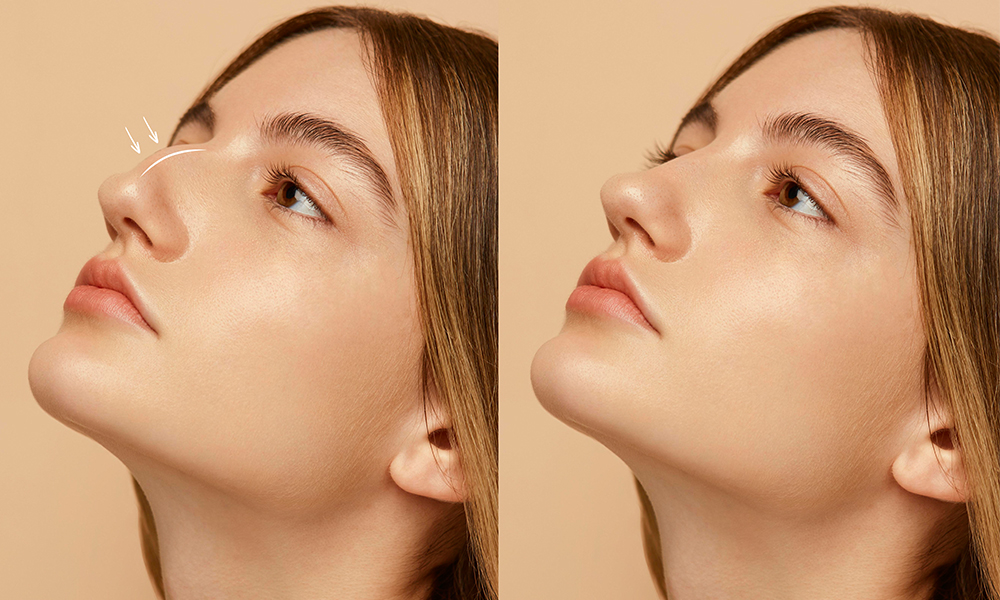-
 Toll Free No 9146-744-744
Toll Free No 9146-744-744 - Appointment
A surgical procedure that is helpful to reshape or alter the shape of the nose in several deformities associated is called Rhinoplasty. The upper part of the nose is made up of bone, while the lower part is made of cartilage. Rhinoplasty surgery can make changes in the bone, cartilage, or in both at the same time to enhance facial characteristics.
Incisions in this procedure are made outside of the nose in a Z-shaped pattern. The scar is hardly visible after the surgery but shall fade over time.
Incisions in this procedure are minor and are hidden inside the nostrils. Thus, the skin outside the nose will stay scarless. The procedure is mainly done to modify the nose structure like a nasal bridge.



People who want to change the shape or structure of their nose, have a facial injury through accidents, or have any congenital deformity can undergo Rhinoplasty.
Rhinoplasty is minimally-invasive surgery in which the incisions are very precise and small and are hidden either or they get fade within a year.
The Rhinoplasty is done under the influence of anesthesia so that the patient doesn’t feel any pain during the surgery. However, a slight discomfort during the recovery period can be felt which can be taken care of through medications.
The average recovery time is of 1 year, but you can feel comfortable after 3-4 weeks.
Congestion & runny nose are common post-operative side effects of Rhinoplasty. However, patients should not touch the nose or wipe hardly or blow the nose. Instead, let the nasal drip happen and wipe it very gently with the tissue or smooth cotton handkerchief.
Make use of dry shampoo or talcum powder as a short-term fix to keep your hair feeling fresh. You can also try hair washing and blow dry hair at the hairdressers. Or else, you can skip hair washing as a preventive measure.
You have to sleep with your head elevated after Rhinoplasty. On average, you should sleep upright for 7-10 days after Rhinoplasty or as directed by your cosmetic surgeon.
OUR PROCESS IS EASY contact us for More information.
Copyright © 2023 hospione.com - All Rights Reserved | Developed by Digital Marketing StudioGenix LLP